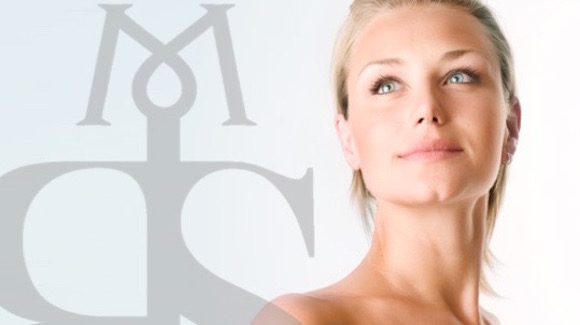
This is a non-surgical cosmetic procedure designed to help an individual achieve a more youthful facial appearance. This procedure does not require any incisions, but instead Botox is administered through injections. The results of the Botox treatment can last anywhere from four to six months. The effects of the Botox treatment will gradually fade and follow up treatments will be needed to keep wrinkles and lines from reappearing.
Botox is a natural purified protein that is prepared from Botulin. It is used cosmetically to remove wrinkles by temporarily paralysing the facial muscles.
Botox is our most popular non surgical procedure and treatment can take no more than mere minutes to do.
There are three types of wrinkles that can be effectively treated with Botox:
MAIN TREATMENT AREAS
SINGLE TREATMENT
1 treatment area from £250
2 treatment areas from £345
3 treatment areas from £440 (Full Face)
(After 1 areas, each further areas charged at £95.00)
What is a “BOTOX” cosmetic treatment?
A: “Botox” cosmetic treatment is a simple, non-surgical procedure that smoothes the deep, persistent facial lines that develop over time. One ten minute treatment – a few tiny injections – relax the muscles that cause those lines to form and keeps them relaxed for up to four months. “Botox” has been widely tested and now has FDA approval in the USA for cosmetic use. The results will start to appear within days. In clinical trials, nearly 90% of people surveyed rated the improvement in their brow lines as moderate to better. For many, “Botox” virtually “erases” these lines. Unlike surgery there is no “down-time” and the client can often return to work etc, directly after the treatment. Within days, they report looking more relaxed. With “Botox”, people know you’ve done something, they just don’t know what.
What is “BOTOX” and what does it contain?
“Botox” is a novel therapeutic muscle-relaxing agent derived from the bacterium, Clostridium Botulinum. Also known as Botulinum Toxin A, the brand “Botox” is produced in controlled laboratory conditions and given in extremely small doses.
How is BOTOX administered?
In a simple clinical procedure, Botox is injected using a very fine needle in the overactive muscles. The muscle function becomes weakened, eliminating part or all of its function. Long standing wrinkles will soften and may eventually disappear. The result is softer, more relaxed and pleasant appearance. The procedure itself takes about 10 minutes although the consultation and application of numbing cream to the skin means that the appointment takes approximately 30 miutes. You may return to work etc immediately; however you should avoid exercise for 4-6 hours or massaging the area to avoid the product spreading.
Does the treatment hurt?
Discomfort is minimal and brief. The specialist will use a local anesthetic cream (if required). A very fine needle (nearly as thin as your hair) is used for the few injections that are usually given per muscle. Once the injection is complete, there is usually no discomfort.
When does BOTOX start to work?
The effects of the injection may be seen after 2-3 days with a maximum benefit reached in 2 weeks. The end result may take up to 14 days to appear, particularly in men with strong facial muscles.
How long does the effect last?
Botox offers sustained relief, dose after dose over the course of long term treatment. The relief felt from a single treatment will normally be sustained for approx. 3-6 months. You will notice a gradual fading of its effects. Please note that response may vary among individuals, and so the degree of relief and duration of effect varies from person to person.
What do you mean by “touch ups” and “top ups”?
Botox may require “touch ups” within 30 days of treatment to correct asymmetry.
How long can I be treated with BOTOX?
Treatment with Botox can typically be repeated indefinitely. Botox has been used for over 20 years world wide. Acceptable safety in long-term treatment has been well established.
Is BOTOX right for me?
In addition to your cosmetic needs, if you suffer from headaches, migraine or pain syndromes associated with muscle spasm, your specialist will determine the right course of therapy. For cosmetic use, please see the question below.
Please note that Botox may not be used if you are pregnant or breast feeding. The effects of Botox may be increased with the use of certain medication so please ensure that you disclose this in the medical history questionnaire and during the consultation.
What are the side-effects of BOTOX?
Botox side-effects are usually transient and mild in nature. Some people notice temporary weakness of muscles or discomfort at the injection site. Minor side-effects may occur and can be related to the dose used and the migration of the “Botox” from the injection site. For this reason, we ask you not to rub or massage the area for 8 hours after the injection.
Summary of possible side-effects: mild swelling at injection site, headache, localised numbness, bruising, rash, but for people with unequal lines prior to treatment, they may need an adjustment treatment after 2 weeks.
Am I a good candidate for BOTOX?
A: Any image-conscious man or woman who is concerned about the appearance of a frown line may be eligible for Botox (subject to medical consultation). Your specialist will help you decide if Botox, or other alternatives such as dermal-fillers are right for you.
Once I have started BOTOX, do I have to continue having the treatments?
You do not have to keep having Botox. It is like returning from a relaxing holiday, away from the unnecessary pressure and stresses that cause over-use and abuse of facial muscles. These effects will gradually fade away and you will feel like you are in need of another relaxing “Botox” holiday!
If you have any questions please do not hesitate to email one of our patient coordinators at info@berkeleysquaremedical.com